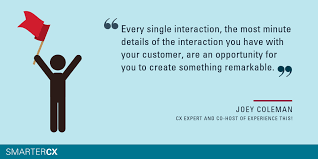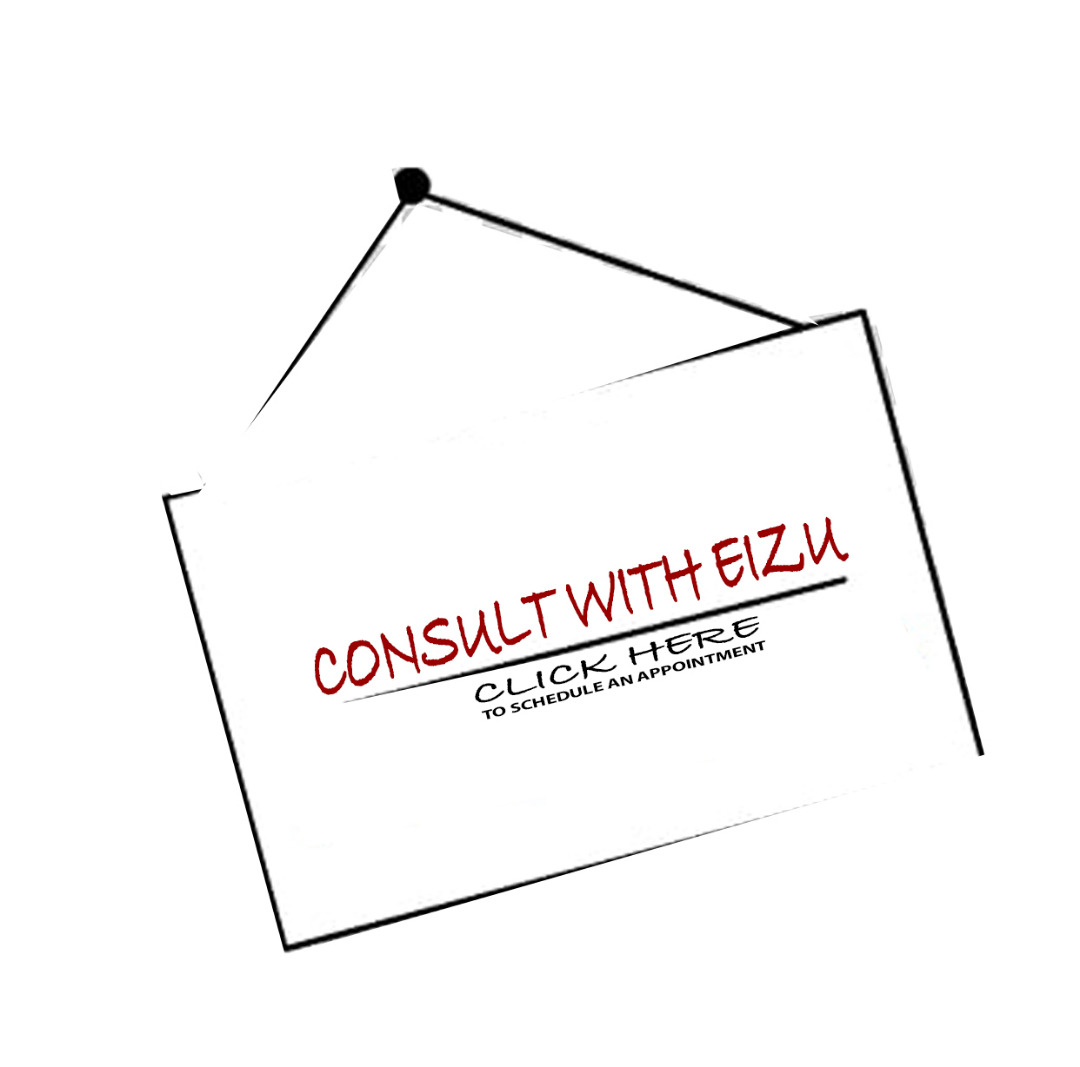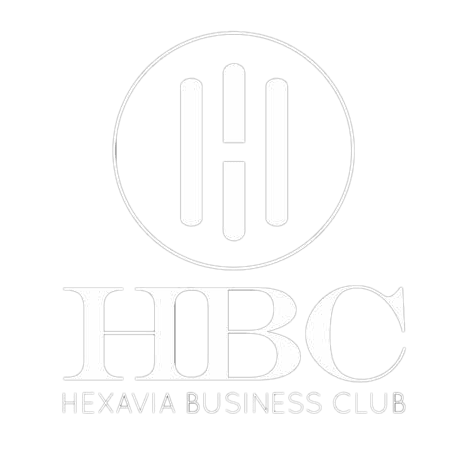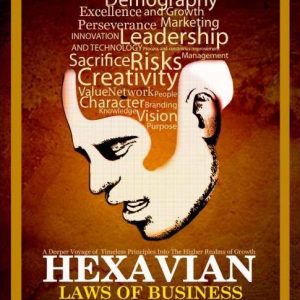 Here’s an interesting definition of a customer. A customer is a person who indirectly pays your bills, vacations and hobbies and still, gives you the opportunity to better yourself. He can fire everyone in an organization from top down, from the boss to the janitor, simply by deciding to spend his money elsewhere. Most fallen organizations got to that point unknowingly through a constant decline in customer satisfaction, poor customer engagement and eventually extremely bad experiences that spreads and opens you up faster than Google’s homepage. In today’s transactional driven world, one of the best competitive advantages any business can have is that point where customers are treated differently. They should feel something more than a transaction, perhaps a connection, an experience, a strong stimulation they’ll be engaged and addicted to. Not a lot firms provides this.
Here’s an interesting definition of a customer. A customer is a person who indirectly pays your bills, vacations and hobbies and still, gives you the opportunity to better yourself. He can fire everyone in an organization from top down, from the boss to the janitor, simply by deciding to spend his money elsewhere. Most fallen organizations got to that point unknowingly through a constant decline in customer satisfaction, poor customer engagement and eventually extremely bad experiences that spreads and opens you up faster than Google’s homepage. In today’s transactional driven world, one of the best competitive advantages any business can have is that point where customers are treated differently. They should feel something more than a transaction, perhaps a connection, an experience, a strong stimulation they’ll be engaged and addicted to. Not a lot firms provides this.
 In winning competition, you can only win through three means, cost leadership, niche focus and differentiation. In most cases coat leadership and price wars only favour large firms with economy of scale. Most times, your prices can’t be lower. In other words, “If our prices are higher, then why should they buy from us?’. Well, maybe if there are a set of other Unique Selling Points, especially through superior customer relationship and experience, customers will be stuck with.
In winning competition, you can only win through three means, cost leadership, niche focus and differentiation. In most cases coat leadership and price wars only favour large firms with economy of scale. Most times, your prices can’t be lower. In other words, “If our prices are higher, then why should they buy from us?’. Well, maybe if there are a set of other Unique Selling Points, especially through superior customer relationship and experience, customers will be stuck with.
 Once upon a time, customer service used to be a department. But now, it is the competitive advantage. It is everyone, it is everything. Customer service is the service provided to customers before, during and after a transaction. Good customer service provides an experience that doesn’t just meet, but surpasses customer expectations. It produces satisfied and repeat transactions which is the bedrock for business growth. The start of superior customer service begins before a transaction, around marketing by understanding the needs and expectation a customer. In the words of the management guru Peter Drucker, he says that “the aim of marketing is to know, engage and understand the customer so well the product or service fits him and sells itself.” It starts off right when we structure out our market, not just by demography, but by psycho graphs. In other words common baselines for connections, between, you, the customer and their needs. Understanding customer needs and their levels of aspirations and expectations is key. There has been a lot of theories around this, but for us at Hexavia, one of the most effective model still remains the Kano Model. Let me break it down at this point.
Once upon a time, customer service used to be a department. But now, it is the competitive advantage. It is everyone, it is everything. Customer service is the service provided to customers before, during and after a transaction. Good customer service provides an experience that doesn’t just meet, but surpasses customer expectations. It produces satisfied and repeat transactions which is the bedrock for business growth. The start of superior customer service begins before a transaction, around marketing by understanding the needs and expectation a customer. In the words of the management guru Peter Drucker, he says that “the aim of marketing is to know, engage and understand the customer so well the product or service fits him and sells itself.” It starts off right when we structure out our market, not just by demography, but by psycho graphs. In other words common baselines for connections, between, you, the customer and their needs. Understanding customer needs and their levels of aspirations and expectations is key. There has been a lot of theories around this, but for us at Hexavia, one of the most effective model still remains the Kano Model. Let me break it down at this point.
 The Kano model is a theory for product development and customer satisfaction. It talks about satisfying customer’s need, but clearly states that not all customer needs are equal. Because of that, it tries to categories and prioritize
The Kano model is a theory for product development and customer satisfaction. It talks about satisfying customer’s need, but clearly states that not all customer needs are equal. Because of that, it tries to categories and prioritize

- Must-be Quality (MVP)
Simply stated, are the requirements of the customers that are taken for granted. When done well, customers are just neutral, but when done poorly, customers are very dissatisfied. Kano originally called these “Must-be’s” because they are the requirements that must be included and are the price of entry into a market. An example is when you travel on a flight and meet your luggage at the carousel ready for pick up. You expect it so not satisfied, but if you didn’t see it you’d be dissatisfied. This can also be referred to as the MVP (Minimum Value Proposition); just like a car (any car is expected to move), if it moves you’re not excited but doesn’t you’d be dissatisfied.

- One-Dimensional Quality
These attributes result in satisfaction when fulfilled and dissatisfaction when not fulfilled. An example of this would be a milk package that is said to have ten percent more milk for the same price will result in customer satisfaction, but if it only contains six percent then the customer will feel misled and it will lead to dissatisfaction. An example is when you travel on a flight and they promise you that you can have more luggage than normal and they actually allow you carry more than normal (you are expected to carry your luggage but not that amount of luggage.

Attractive Quality
These are exceptional quality. These attributes provide satisfaction when achieved fully, but do not cause dissatisfaction when not fulfilled. This is the point at which out of the world brand promises are made. These are attributes that are spoken and the ones in which companies compete on. These are attributes that are not normally expected, for example, a thermometer on a package of milk showing the temperature of the milk. Since these types of attributes of quality unexpectedly delight customers, they are often unspoken. An example is you flying on economy and you are served a meal with drinks and pampering typical for business class. You’d definitely notice and sneeze to others about it.

Indifferent Quality
These attributes refer to aspects that are neither good nor bad, and they do not result in either customer satisfaction or customer dissatisfaction. For example, thickness of the wax coating on a milk carton. This might be key to the design and manufacturing of the carton, but consumers are not even aware of the distinction. It is interesting to identify these attributes in the product in order to suppress them and therefore diminish production costs.

Reverse Quality
These attributes refer to a high degree of achievement resulting in dissatisfaction and to the fact that not all customers are alike. For example, some customers prefer high-tech products, while others prefer the basic model of a product and will be dissatisfied if a product has too many extra features.
 People and organizations buy for the functional benefits as well as for the non-tangible benefits of a product. The functional benefits of a product within an industry and grade are usually the same. Take for example, a car, the functional benefit is transportation. But the non-tangible benefits differ, say “comfort, trust, and prestige”. This makes a brand, it makes the brand. This differentiates a Benz and a Kia, any bottled water and an Eva, Dana Air and an Arik. The latter may be more expensive, but still the preferred choice. That difference should be the promise, the perception and customer experience we offer. As industries get organized and standardized, most battle for competition can only be won through non tangible benefits. We are practically seeing this through the rating mechanisms and strategies by Uber, Bolts and the likes. I travel a lot. While I am in a new town, I do more of Uber. And in engaging different rides, I see how extra-ordinary service doesn’t have to cost that much. I once flew into a new town and the Uber guy asked me what genre of songs I liked, he played it, plus he had different types of car charger, a few magazines and a cold bottle of water. Now that’s not customer service, that’s exceptional service. I went offline with him and eventually used him all through my stay in that town. Also, once upon a time, I remember when I once got into Port Harcourt pretty late and all the hotels in G.R.A were booked. It was at the height of kidnapping and militant operations and I didn’t want to take my chances with trying other places. And then this hotel manager offered me a room in his house for the night. The wife also gave me a meal and in turn sold me a project. He won me over forever. And ever since I’ve referred countless businesses their way. There is always a reward for going the extra mile. Business or not, it’s nice to be nice. It always has its rewards beyond our imaginations.
People and organizations buy for the functional benefits as well as for the non-tangible benefits of a product. The functional benefits of a product within an industry and grade are usually the same. Take for example, a car, the functional benefit is transportation. But the non-tangible benefits differ, say “comfort, trust, and prestige”. This makes a brand, it makes the brand. This differentiates a Benz and a Kia, any bottled water and an Eva, Dana Air and an Arik. The latter may be more expensive, but still the preferred choice. That difference should be the promise, the perception and customer experience we offer. As industries get organized and standardized, most battle for competition can only be won through non tangible benefits. We are practically seeing this through the rating mechanisms and strategies by Uber, Bolts and the likes. I travel a lot. While I am in a new town, I do more of Uber. And in engaging different rides, I see how extra-ordinary service doesn’t have to cost that much. I once flew into a new town and the Uber guy asked me what genre of songs I liked, he played it, plus he had different types of car charger, a few magazines and a cold bottle of water. Now that’s not customer service, that’s exceptional service. I went offline with him and eventually used him all through my stay in that town. Also, once upon a time, I remember when I once got into Port Harcourt pretty late and all the hotels in G.R.A were booked. It was at the height of kidnapping and militant operations and I didn’t want to take my chances with trying other places. And then this hotel manager offered me a room in his house for the night. The wife also gave me a meal and in turn sold me a project. He won me over forever. And ever since I’ve referred countless businesses their way. There is always a reward for going the extra mile. Business or not, it’s nice to be nice. It always has its rewards beyond our imaginations.

When a market gets crowded and choked, go the extra mile, it’s less crowded, for most people don’t travel that far. It’s priceless in building brand equity. The secret to building a desirable brand and repeat patronage can only be delivered when we have a superior non-tangible experience from transactions. Using, building and broadcasting through your products and services, key words like trust, excellence, reliability, warmth, promise, we listen, we care, we support and follow up. I look forward to helping you build an exceptional and experiential customer relationship system.

Eizu, ©Hexavia!
Strategy. Business StartUps and Corporate Restructuring Consulting
T: 08035202891
Uwaoma Eizu is the lead strategist at Hexavia! He is a graduate of Mathematics with two MBAs and over a decade of experience working with startups and big businesses. His core is in building startups and in corporate restructuring. He is also a certified member of the Nigerian Institute of Management, Institute of Strategic Management of Nigeria and the Project Management Institute, USA. By the side, he writes weekly for the BusinessDay newspaper.




